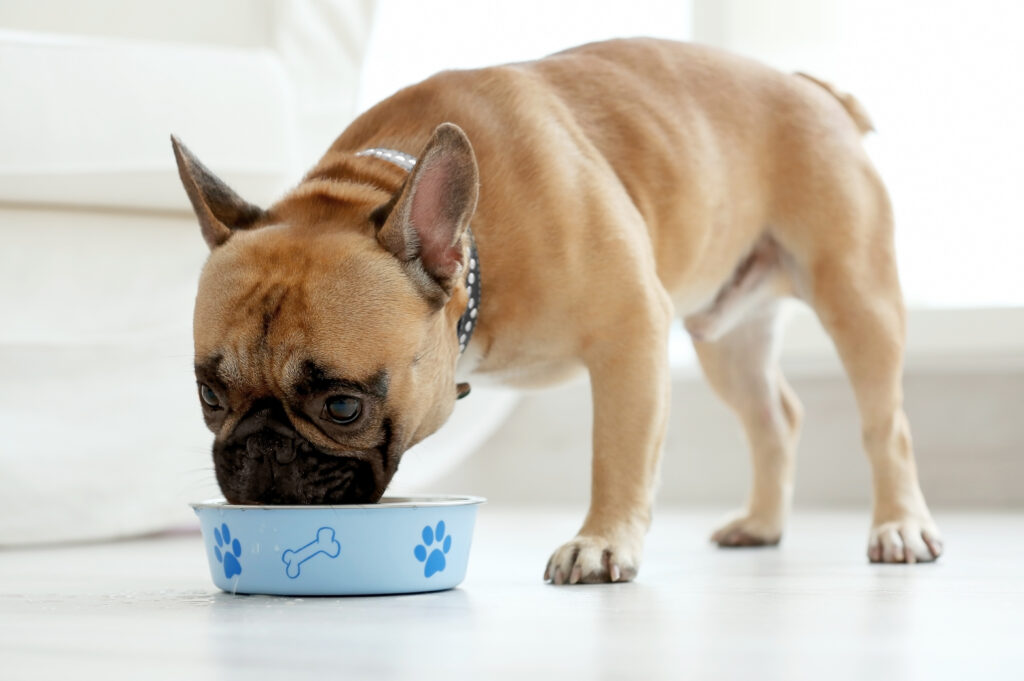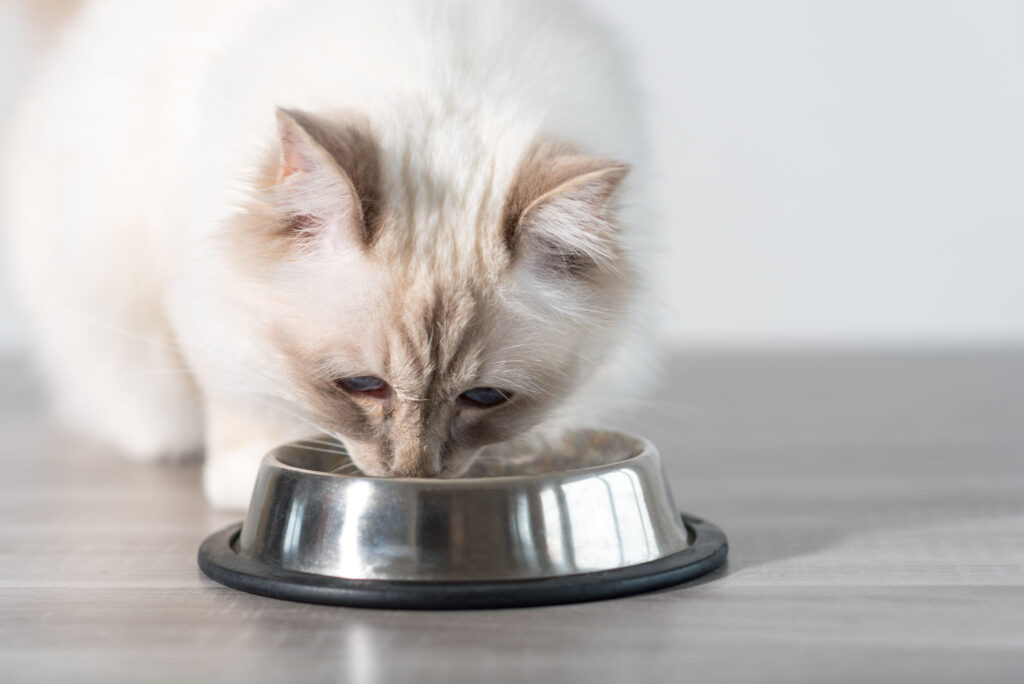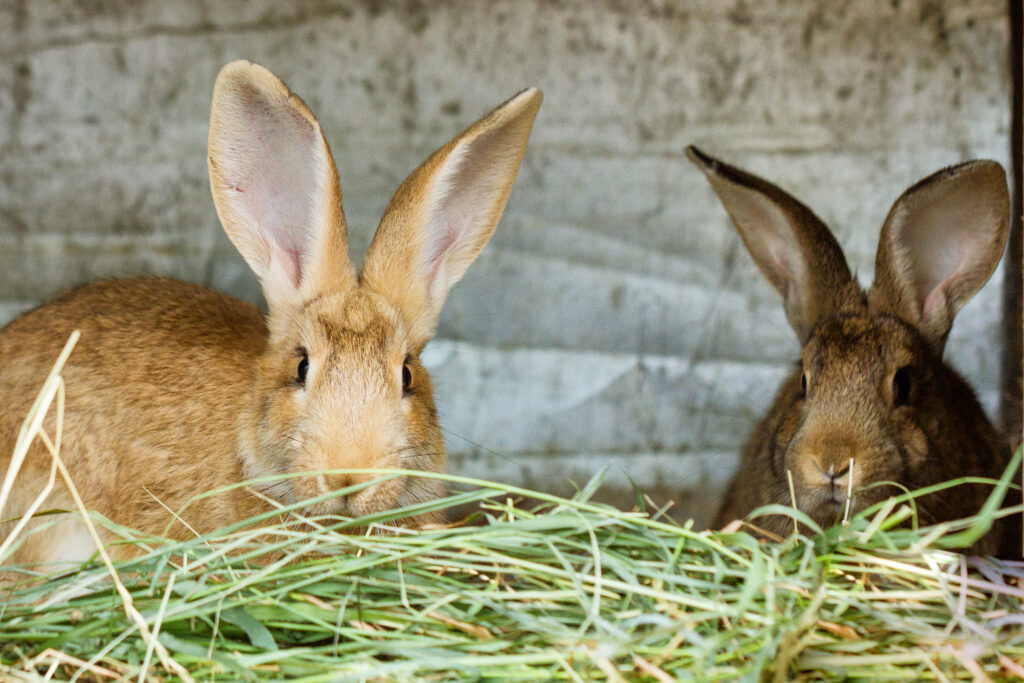GoVets is a brand new and well-equipped veterinary practice located around 10 minutes away from Manchester City Centre. We are committed to putting your pet first and providing exceptional service and care to our clients.
Choosing the Right Food for Your Pet
Whether you own a dog, cat, or rabbit, ensuring your pet has a healthy diet is essential. However, with so many different pet foods on the market, it can be difficult to know which one is best for your pet.

Your Dog
You can feed your dog many diets, so you should do your research and get the right advice so you can make an informed decision and keep some factors in mind. Dogs are carnivores but they do eat some omnivorous foods, so a healthy, balanced and varied diet is crucial for meeting their needs.
Meat Content
The meat content of your dog’s food matters. As dogs are carnivores, protein is a key ingredient in their diet. Depending on their age, you should be feeding your dog a minimum of 18-29% protein. A growing puppy will require more protein than an adult dog. However, it is important to remember that too much protein can damage a dog’s kidneys due to the high content of urea. A good rule to follow is no more than one gram of protein per pound of IDEAL body weight.
Weight and Age
Your dog’s health status and age should help you decide on the best food to feed them. The dietary requirements for a younger or growing dog will be a lot different from the diet of a senior dog. You should also assess the weight of your dog before you choose its food. If you are ever unsure about what to feed your dog, speak to your vet. They will assess your dog’s diet and nutrition while taking their age, health, and weight into consideration.
Dry Food
Many owners don’t like the idea of dry food as it seems unnatural, but it has many benefits. It encourages dogs to chew their food which is good for their teeth. It has a high calorific content, so owners can feed a small amount while meeting their dog’s nutritional needs, making it a cheaper and more environmentally-friendly choice. Dry food is cleaner and lasts longer than other dog food varieties and can be left out for long periods, which is great for dogs who prefer to graze throughout the day.
Wet Food
One of the main benefits of wet food is the moisture content, which is great for old or sick pets that are prone to dehydration. Most dogs would rather eat wet food than dry food as it has a more intense smell and taste. Wet food is also good for dogs that are prone to weight gain, as they can eat a larger amount of it without exceeding their calorie requirements. However, this can be a negative of wet food, as owners will need to feed their dog a larger amount of wet food to reach the same calorific value as a smaller portion of dry food. Wet food also spoils faster and smells stronger than dry food.
Raw Food
A raw diet has become more popular over recent years. It can be good for dogs with allergies. Benefits include a glossy coat, balanced energy levels, better digestion, and firmer stools. However, you should speak to your vet before you choose to follow a raw diet. Disadvantages of this diet include the high cost and time investment. It can cause nutritional deficiencies and health problems if you do not do the right research and if you don’t get advice and support from your vet and a pet nutritionist. Raw food can also be dangerous to pets as it can contain bacteria or pathogens that cause illness. This can contaminate the house and affect others who live there.
Foods to Avoid
You should not feed your dog the following foods:
- Onions
- Garlic
- Chives
- Corn on the cob
- Avocado
- Grapes
- Raisins
- Artificial sweetener (Xylitol)
- Macadamia nuts
- Chocolate
- Alcohol
- Cooked bones
There is a huge difference between raw and cooked bones. A raw uncooked bone is a natural treat to clean your dog’s teeth and keep them entertained. You should always supervise your dog when they have a treat like this to chew on. However, cooked bones can be fatal, as they can easily splinter, cause constipation and in severe cases, it can puncture the gut, which can be fatal. If your dog consumes any of the above, you should immediately take your dog to the vet. Even a small amount can be fatal, so you should act fast.

Your Cat
Cats are carnivores that need animal protein in their diet to maintain their health. It is important to feed your cat a good quality diet that is suitable for their age and health. Choosing the right food for your cat can be confusing, but knowing what is good and bad for their diet and health is a step in the right direction.
Meat Content
When purchasing cat food, you should aim to buy products that have a protein content of at least 25%. The higher the protein the better, but that isn’t all you should look for. You should also check the ingredients for the named protein and fat source, the specific carbohydrates, vitamins and minerals, and taurine percentage (needed for retinal health).
Health Status
The age and health status of your cat should also influence your decision. A growing kitten will not require the same diet as an overweight adult cat. If you have a senior cat with health issues, the wrong diet could harm their condition. The best way to ensure you are feeding the right food for the age and health status of your cat is to speak to your vet. The right amount of food is also important. To ensure you are not under-or overfeeding your cat, you should follow the guidelines on the packaging and measure out their portions.
Dry Food
Feeding your cat dry food works for some but not all. The main benefits include cost, ease, and convenience. It is also good for cats that prefer free-feeding as it can be left out for long periods. However, dry food is normally high in carbohydrates, which can lead to obesity and diabetes in cats.
Wet Food
Wet food is another popular option on the pet market. It is good for cats that are overweight and constipated. It can also benefit cats that are at risk of developing lower urinary tract disease or dehydration, as the moisture in the food can rehydrate them. However, wet food is usually more expensive than dry food, it isn’t as easy to use and it can smell too.
Raw Food
Raw feeding has become increasingly popular over recent years. Cats have a shorter and more acidic digestive tract, so they can digest raw food better than humans. Raw diets are good for cats with allergies and offer a natural alternative to pet foods. However, there is some controversy that surrounds a raw diet. Raw food could put your pet and other pets/people in your household at risk of illness. If you do not feed a complete diet or miss out on essential vitamins and minerals, then your cat could become malnourished. If you would like to feed your cat a raw diet, then you should get advice from your vet and do lots of research before following this route.
Foods to Avoid
You should not feed your cat the following items:
- Grapes
- Raisins/Sultanas
- Fruit seeds
- Fruit stones
- Tomatoes
- Onions
- Mushrooms
- Corn on the cob
- Avocado
- Bread dough
- Chocolate
- Milk
- Other dairy products
- Cooked bones
Many people are surprised when they are told that they should not feed cats milk. Cats may enjoy the flavour, but most cats are actually lactose intolerant, so milk and other dairy products should be avoided. You should contact your vet immediately if your cat consumes any of the above products.

Your Rabbit
Rabbits have very complex digestive systems, so feeding them the right diet is crucial. It can be complicated knowing the right food to feed them if you have not done your research. It should consist of at least 80% of good quality coarse hay, 10% fresh greens, 5% pellets and 5% healthy treats.
Hay (80%)
It can be difficult finding the right hay for your rabbits as they can be fussy, but experimenting and spending a bit more on a brand they love will keep their teeth and tummies healthy and could potentially save you money on your vet bills. Rabbit teeth continually grow throughout their lifetime as they are designed to withstand chewing and grazing throughout the day, so they should always have access to clean and fresh good quality hay.
Fresh Greens (10%)
Rabbits can eat fresh vegetables daily. However, it is important to feed them the right ones, like fresh herbs and leafy greens. Leafy greens include spring greens, romaine lettuce (never feed iceberg lettuce), cauliflower leaves and kale. Fresh herbs include coriander, parsley, basil, mint, tarragon and thyme. You should also avoid vegetables like broccoli, asparagus and cabbage, as these kinds of veggies cause gas and bloat, which can be fatal to rabbits.
Pellets (5%)
Pellets offer extra support and nutrition to a rabbit’s diet, but they should be fed in small amounts. Too many pellets can lead to weight gain and digestive problems as they can fill rabbits up and deter them from eating hay. When choosing food for your rabbit, you should look for pellets that have a high amount of fibre. You should also avoid muesli, as this is high in sugar and the way rabbits chew it can make their teeth uneven.
Healthy Treats (5%)
There are many healthy treats you can feed your rabbit. Hay-based treats are best, as they are high in fibre and low in sugar. Fruit should only be given to your rabbits as a weekly treat as they most are high in sugar. This also applies to carrots and other vegetables high in sugar. You should avoid feeding your rabbit yoghurt drops and commercial treats that are high in sugar.
Before you make your decision, you should do your research and speak to an expert, like your vet or a pet nutritionist. All pets should always have access to fresh, clean water throughout the day.




